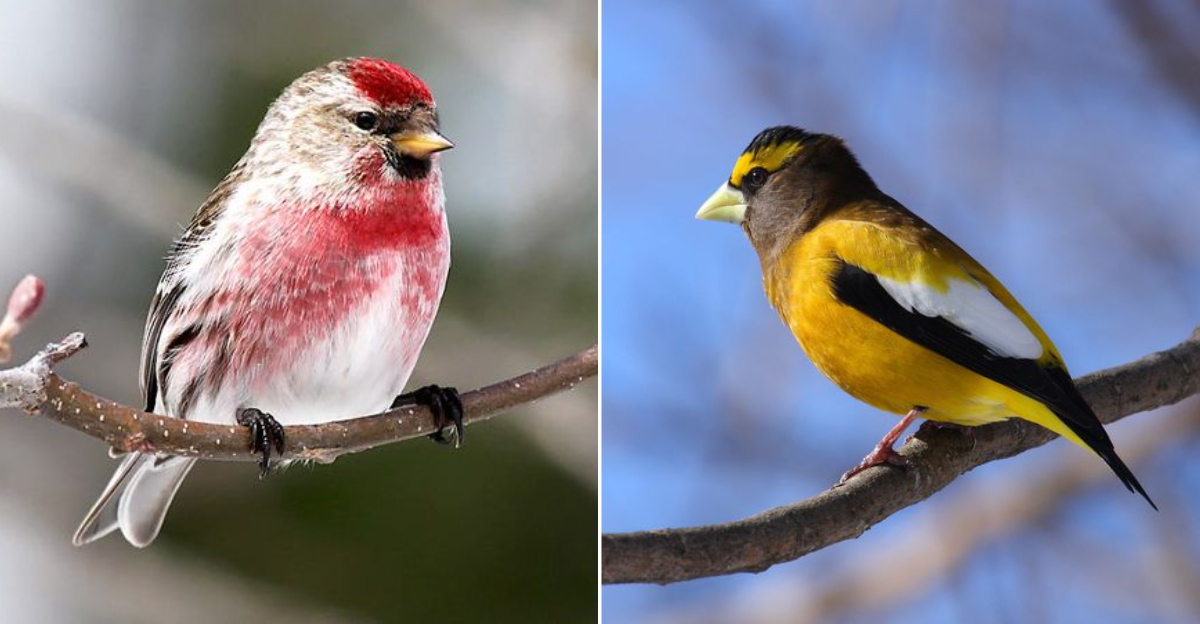Birdwatching is one of those hobbies that can completely shift your perspective, helping you see nature and the world around you in a whole new light. Often, we’re unaware of the incredible bird species that flit through the trees, just out of sight.
If you’re in Missouri, prepare to be amazed by the surprising variety of finches that call this state home. Each one brings a burst of color and song to our backyards and forests.
Whether you’re clutching binoculars at dawn or filling feeders in your garden, learning about these feathered companions transforms every outdoor moment into something truly magical.
1. American Goldfinch (Spinus tristis)
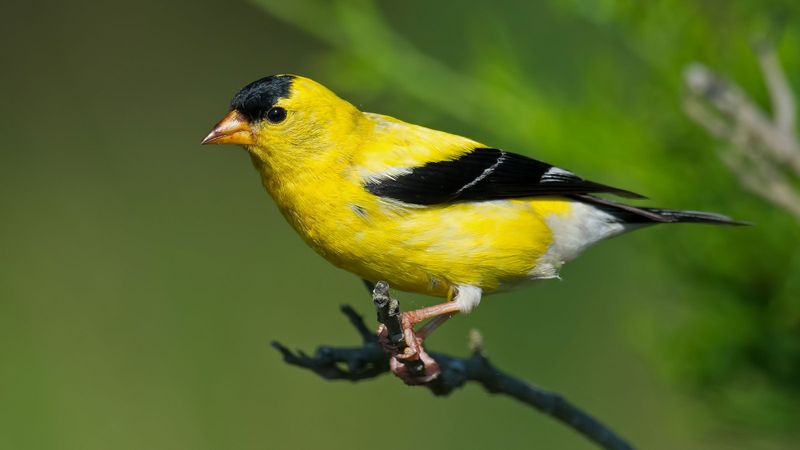
The sunshine-yellow flash of a male American Goldfinch never fails to make me smile. These vibrant birds transform dramatically with seasons – brilliant gold with black wings in summer, fading to olive-drab by winter.
I’ve watched them perform their bouncy, wavering flight pattern while calling their distinctive “po-ta-to-chip” song. They’re strict vegetarians, primarily feeding on seeds, especially thistle and sunflower. Place nyjer seed feeders in your yard, and you’re likely to attract these cheerful visitors. As late nesters, they wait until June or July, when thistle down becomes available for nest-building material.
2. House Finch (Haemorhous mexicanus)
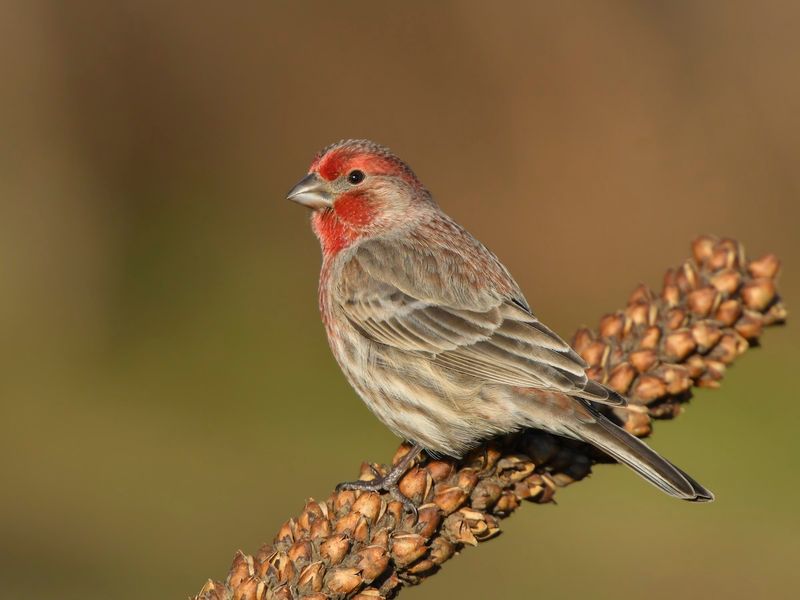
Raspberry-splashed males announce spring with their melodic songs from telephone wires and feeder perches across Missouri. House Finches weren’t always here – they’re actually West Coast natives that were released in New York in the 1940s and rapidly colonized eastward.
Their adaptability astounds me. One pair built a nest in my porch wreath last year, raising three clutches before summer’s end!
Females are streaky brown but equally charming. Unlike their goldfinch cousins, House Finches adore fruit, happily munching on berries and apple slices alongside their seed diet. They’re year-round residents in Missouri.
3. Purple Finch (Haemorhous purpureus)
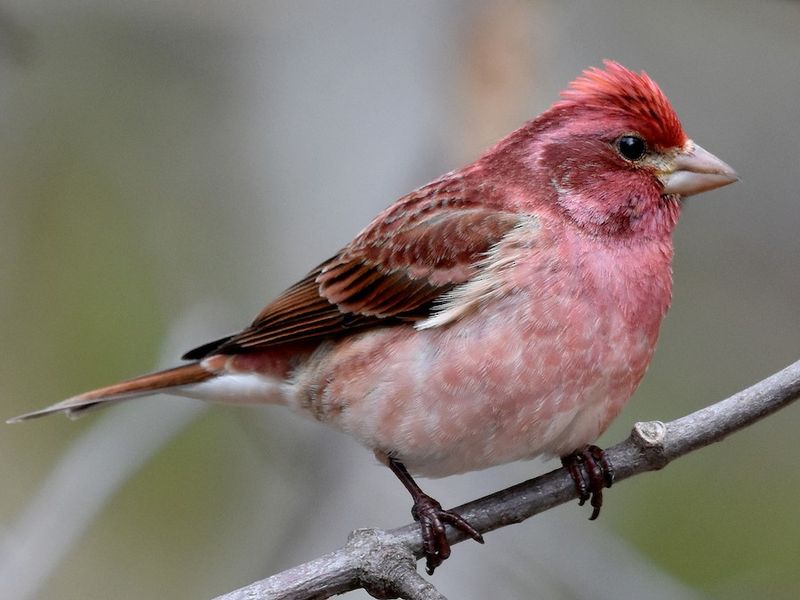
“Raspberry dipped” describes these woodland beauties perfectly. Many novice birders confuse them with House Finches, but Purple Finches appear as though they were dipped entirely in berry juice – their color extends to their back, unlike their urban cousins.
These winter visitors arrive in Missouri around October, brightening gloomy days with their rich color and sweet warbling song. Their chunky bills expertly crack seeds and pluck buds from trees.
My most memorable Purple Finch encounter happened during a snowstorm when a small flock descended on my platform feeder, their rosy plumage creating a stunning contrast against the white landscape.
4. Pine Siskin (Spinus pinus)
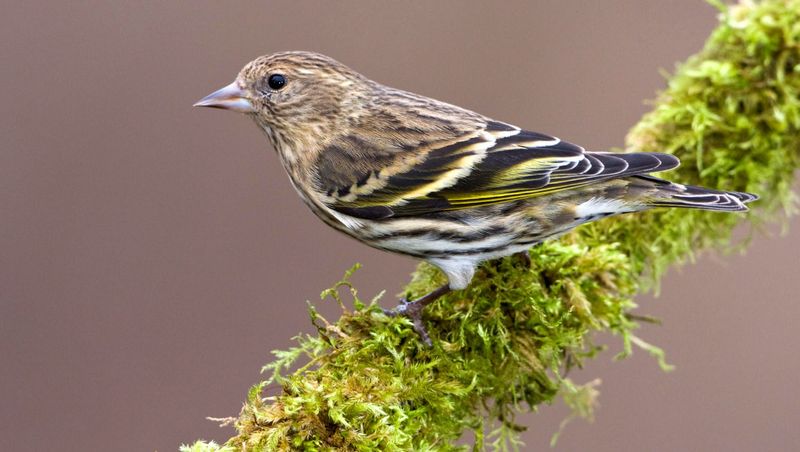
Tiny warriors of the finch world! Pine Siskins might look plain with their heavily streaked bodies, but that yellow wing flash gives them away. These social butterflies travel in tight, chattering flocks that swirl through Missouri during winter irruption years.
Their tolerance for cold weather amazes ornithologists. I’ve watched them feeding contentedly in -10°F temperatures when most birds have sensibly fled south.
Extremely tame compared to other finches, they’ll often feed within arms’ reach. Their calls include a distinctive rising “zreeeeeet” that carries across winter woods. Provide nyjer seed in tube feeders with small ports to attract these delightful winter visitors.
5. Common Redpoll (Acanthis flammea)
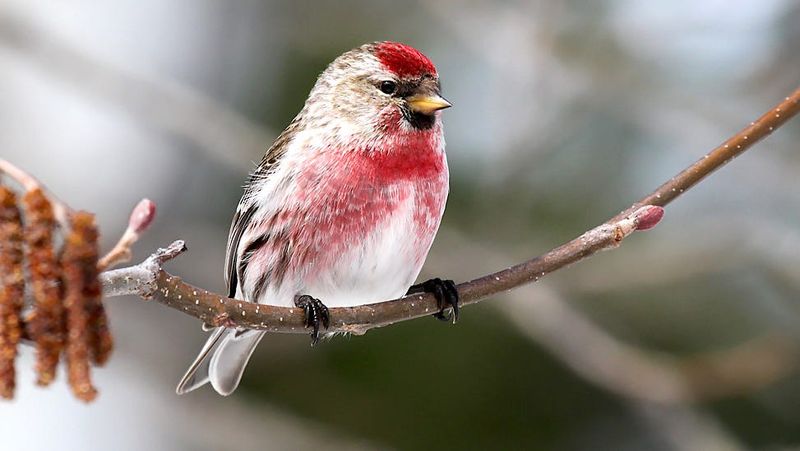
Arctic visitors that grace Missouri only during the harshest winters! These fluffy little finches have a charming red cap and black chin that make them look surprised. Males flash a rosy wash across their white chests.
The winter of 2018 brought an unprecedented redpoll irruption to my northern Missouri feeders. These remarkable birds can survive temperatures 100 degrees below zero in their Arctic breeding grounds!
Their feeding strategy is uniquely efficient – they have a special throat pouch for storing seeds, allowing them to gather food quickly, then retreat to sheltered spots to digest at leisure. Watch for them at nyjer and black oil sunflower feeders during particularly cold winters.
6. Evening Grosbeak (Coccothraustes vespertinus)
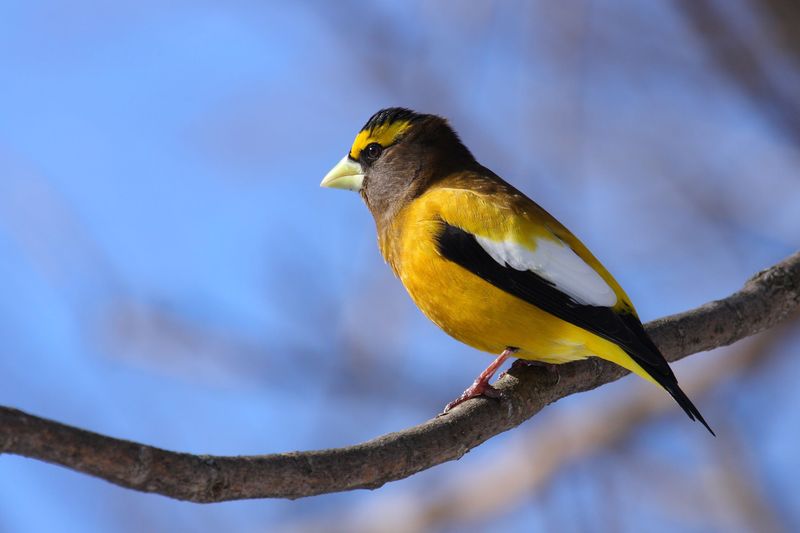
Yellow, black, and white tuxedo-clad visitors that could crack a walnut with their massive beaks! Evening Grosbeaks are the heavyweight champions of Missouri’s winter finch scene, appearing irregularly during irruption years.
Their name puzzles many – they’re actually active throughout daylight hours, not just evenings. When a flock of twenty descended on my platform feeder during the polar vortex of 2019, they emptied it in minutes, their powerful bills making quick work of black oil sunflower seeds.
Listen for their loud, ringing calls that sound like “clee-ip” – often your first clue these striking birds have arrived. Sadly, their populations have declined by over 90% since the 1970s.
7. Red Crossbill (Loxia curvirostra)
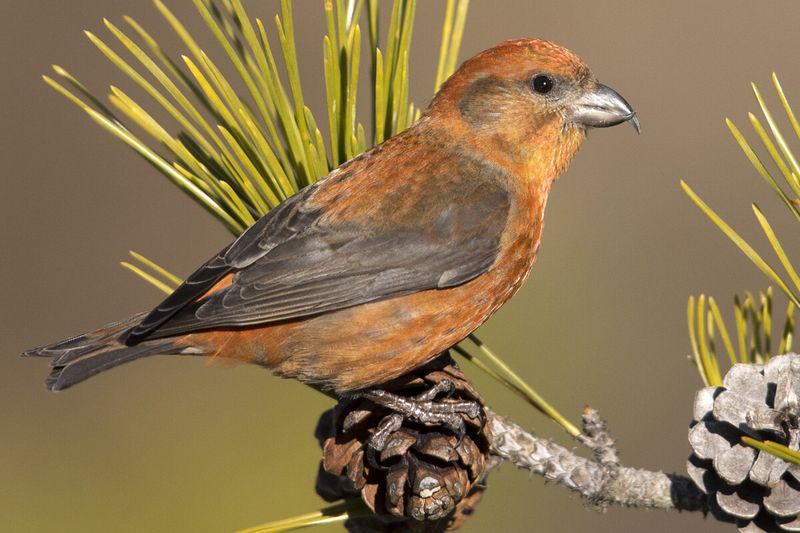
Nature’s engineering marvel! Red Crossbills have uniquely crossed bill tips that act like perfect tools for prying open pine cones. Males have brick-red plumage while females wear yellowish-olive – both equally striking against winter conifers.
These nomadic finches follow cone crops rather than traditional migration patterns, making them unpredictable Missouri visitors. Several distinct types exist, each with slightly different calls and bill shapes specialized for specific conifer species.
My lifer Red Crossbill sighting happened at Cuivre River State Park, where a small flock worked steadily through a stand of shortleaf pines. Watch for them in Missouri’s coniferous forests during winter months, especially when northern cone crops fail.
8. White-winged Crossbill (Loxia leucoptera)

Raspberry-pink males with striking white wing bars announce these rare Missouri visitors. Their distinctive crossed bills work like tiny crowbars, efficiently extracting seeds from spruce and tamarack cones that other birds can’t access.
Even rarer than their Red Crossbill cousins in Missouri, these birds appear only during significant irruption years. Their sweet, canary-like trills might be your first clue they’ve arrived.
I’ll never forget the December morning at Swan Lake National Wildlife Refuge when a small flock descended on the spruce trees near the visitor center. Unlike many finches, White-winged Crossbills often breed in winter, timing reproduction to coincide with abundant cone crops rather than seasons.
9. Lesser Goldfinch (Spinus psaltria)
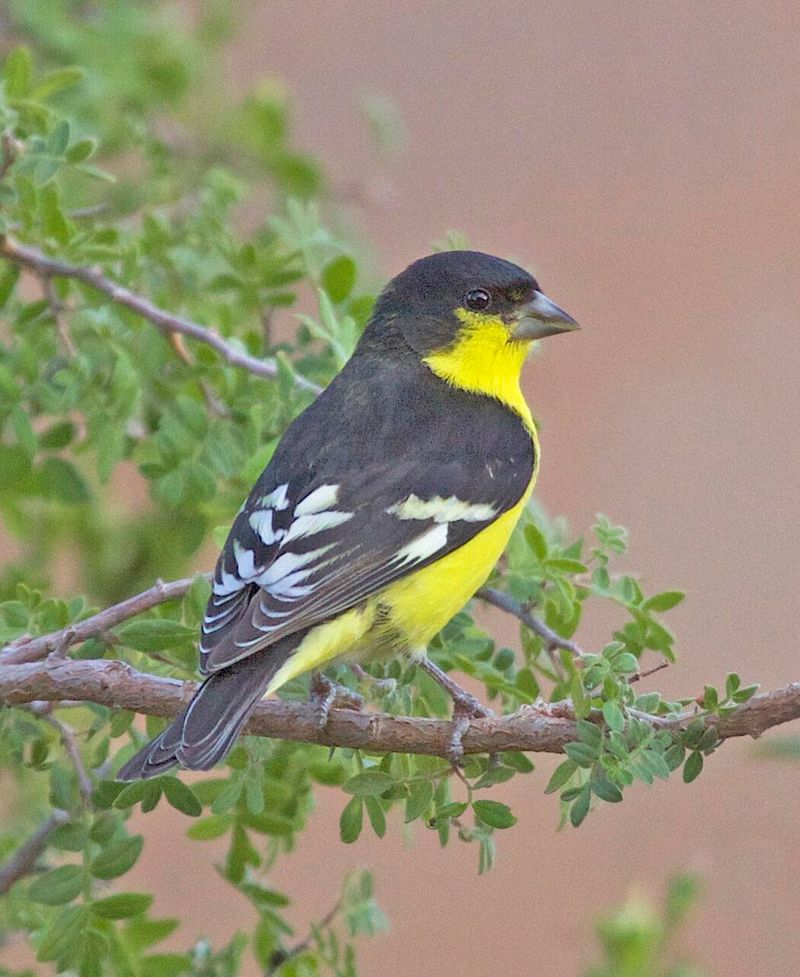
Tiny jewels rarely spotted in Missouri! These southwestern natives occasionally stray into our state, creating excitement among local birders. Males have glossy black caps with bright yellow underparts – Missouri typically sees the black-backed variety rather than the green-backed western form.
Smaller than their American Goldfinch cousins, these birds have a sweet, warbling song and distinctive flight call. They particularly love thistle and sunflower seeds.
My heart nearly stopped when I spotted one mixed with American Goldfinches at Loess Bluffs refuge last spring – a legitimate rarity! If you’re lucky enough to encounter these southwestern wanderers, they’ll likely be in open woodland edges or weedy fields in southern Missouri counties.
10. Brown-capped Rosy Finch (Leucosticte australis)
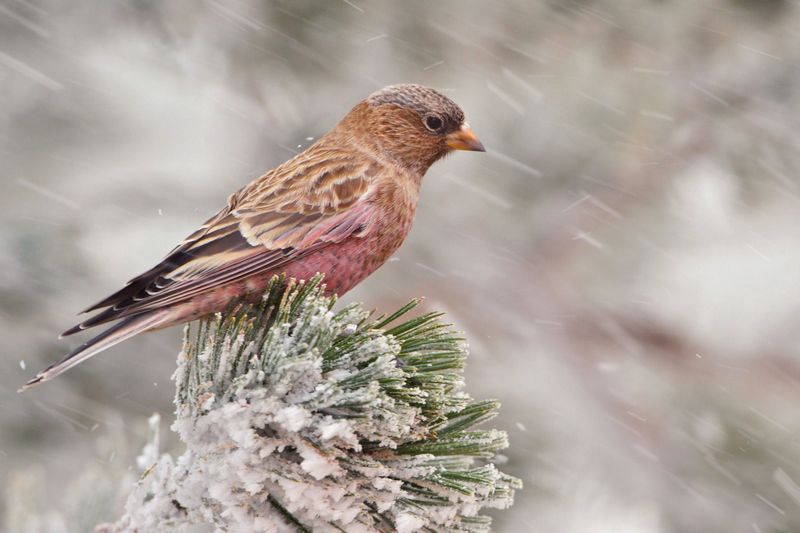
Chocolate-brown with pink highlights, these high-altitude specialists rank among Missouri’s rarest accidental visitors. Native to Colorado’s alpine zones above 10,000 feet, they occasionally wander eastward during harsh winters.
Only three confirmed sightings exist in Missouri’s ornithological records! The birds feed primarily on seeds blown across snowfields, using their specialized bills to extract them from icy surfaces.
While leading a winter bird count near Table Rock Lake in 2017, I experienced what I consider birding’s holy grail – a lone Brown-capped Rosy Finch at a rural feeder, creating a state-wide alert that drew birders from five states. These birds typically travel with other rosy finch species, so check mixed flocks carefully.
11. Red-breasted Nuthatch (Sitta canadensis)
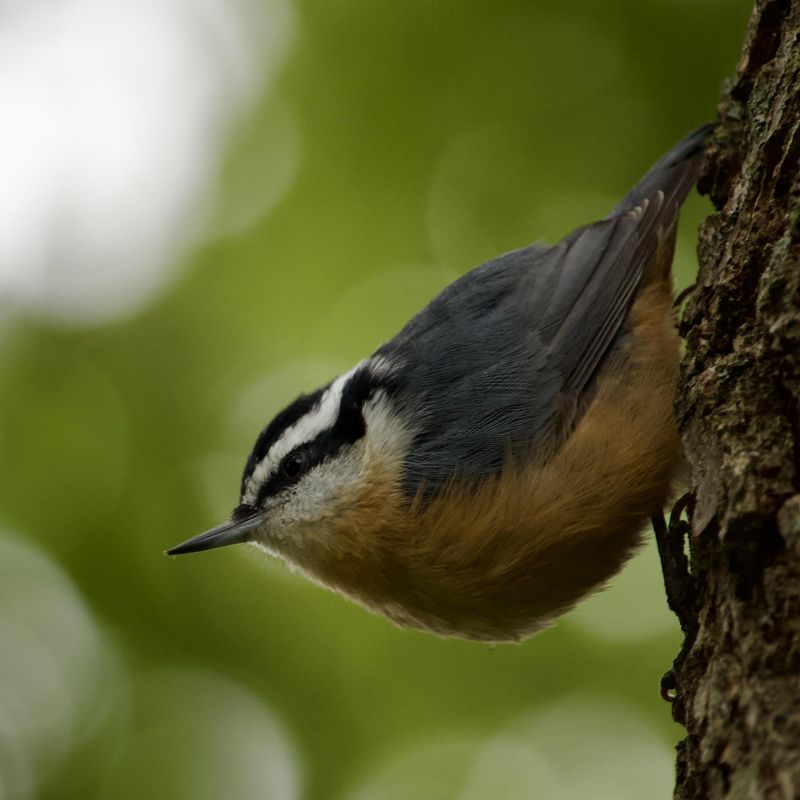
Wait – that’s not a finch! This tiny, hyperactive bird with its rusty underparts and black eye-stripe technically belongs to the nuthatch family, but often associates with winter finch irruptions into Missouri.
Their nasal “yank-yank” calls alert me to their presence before I spot them inching headfirst down tree trunks. These acrobatic little birds bring northern forest charm to Missouri during periodic winter invasions.
They’re conifer specialists that follow seed crops southward, often appearing alongside Pine Siskins and crossbills. I’ve had success attracting them to suet and peanut feeders during irruption years. They’re famous for smearing sticky pine resin around their nest holes to deter predators – nature’s home security system!
